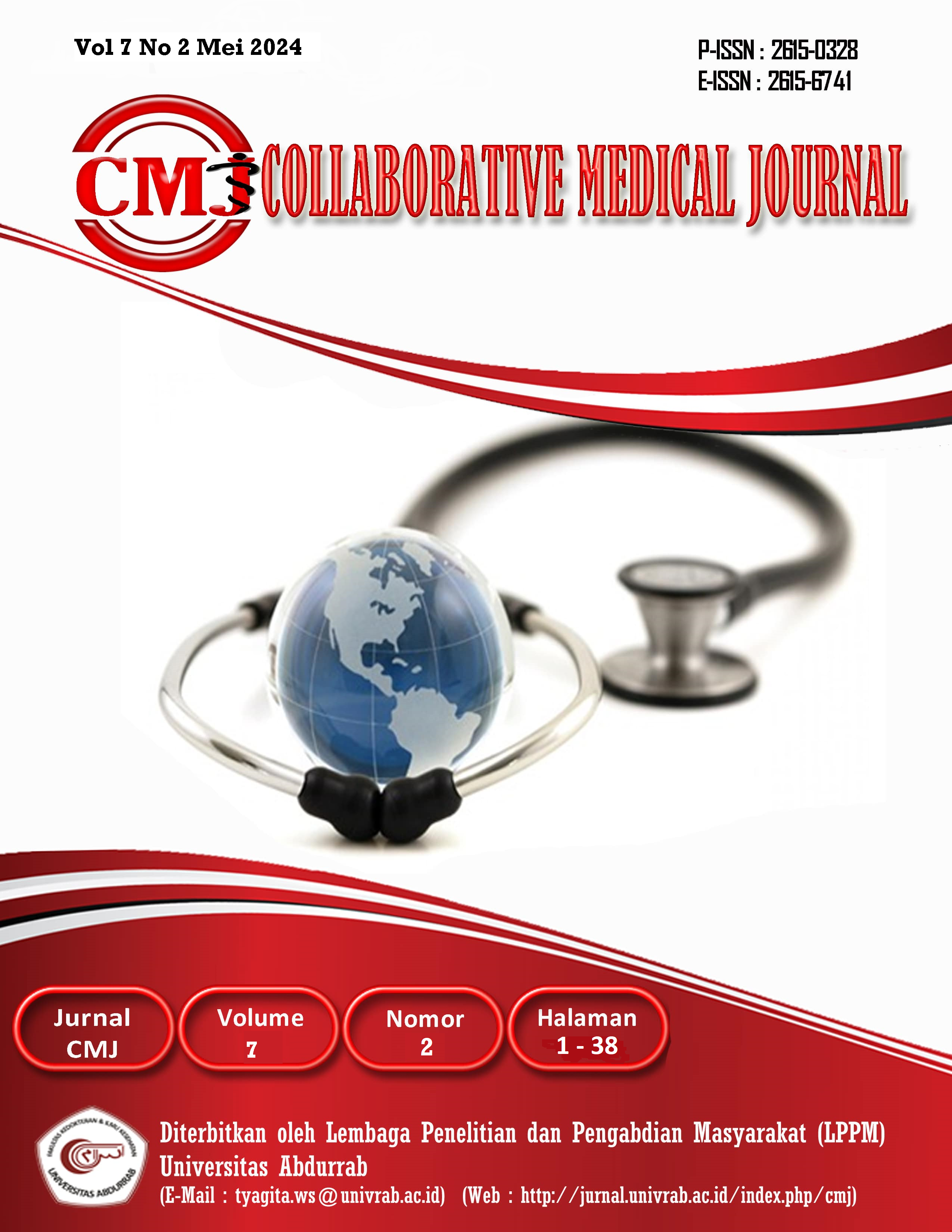HUBUNGAN POSTUR JANGGAL DENGAN KEJADIAN LOW BACK PAIN PADA PEMANEN SAWIT DI KABUPATEN PELALAWAN
DOI:
https://doi.org/10.36341/cmj.v7i2.5055Keywords:
Low Back Pain, odd posture, oil harvester.Abstract
LBP is the most common work-related musculoskeletal disorder. Lower back pain (LBP) is not a disease or diagnosis. At least 80% of people have experienced LBP. Personal, environmental, and work-related factors can all contribute to LBP. The primary cause of LBP is poor work posture. Palm oil harvesters frequently pose awkwardly. To be diagnosed with LBP, the subject must have had it for a year and have paralumbar or gluteal muscle tenderness, as well as radiating lower leg pain. This study investigates awkward posture and low back pain among palm oil harvesters. This study is cross-sectional. This 75-person study was carried out at Pelalawan Regency. The sampling method was simply random. The data was collected using a questionnaire. According to the Spearman test, an awkward posture is associated with low back pain (LBP) (p-value = 0.019)
Downloads
References
Elyssa. et al, 2015 Lag Time In Reporting Injuries, Receiving Medical Care, and Missing Work Disability In Occupational Back Injuries diterbitkan JOEM Vol 58, No 1, Januari 2016
Hand L, 2014. Low Back Pin top cause of disability worldwide. Medscape MedicalNews from Webmed. http://www.medscape.com/viewarticle/822492. Diakses 29 Maret 2014
Herry Koesyanto, 2013 Masa kerja dan sikap kerja duduk terhadap nyeri punggung . http://journal.unnes.ac.id/nju/index.php/kemas diakses 14 September 2014
Erwin. et al, 2015. Hubungan Posisi Kerja Pada Pekerja Industri Batu Bata Dengan Kejadian LOW BACK PAIN. Universitas Riau diterbitkan JOM Vol 2 No 2, Oktober 2015
Etra. et al, 2014. Hubungan Menggunakan BACKPACK dengan kejadian Low Back Pain pada Mahasiswa Universitas Riau.Universitas Riau diterbitan JOM Vol 1 No 2, Oktober 2014
Indri Sarwili, 2014. Hubungan Beban Kerja Perawat Terhadap Angka Kejadian LBP (Low Back Pain) diakses 3 September 2015. Vol.5 No 3 September 2015.
Downloads
Published
Issue
Section
License
1. Copyright of all journal manuscripts is held by the Collaborative Medical Journal (CMJ)
2. Formal legal provisions to access digital articles of electronic journal are subject to the provision of the Creative Commons Attribution-ShareAlike license (CC BY-NC-SA), which means that Collaborative Medical Journal (CMJ) is rightful to keep, transfer media/format, manage in the form of databases, maintain, and publish articles.
3. Published manuscripts both printed and electronic are open access for educational, research, and library purposes. Additionally, the editorial board is not responsible for any violations of copyright law.
licensed under a Creative Commons Attribution-ShareAlike 4.0 International License.





